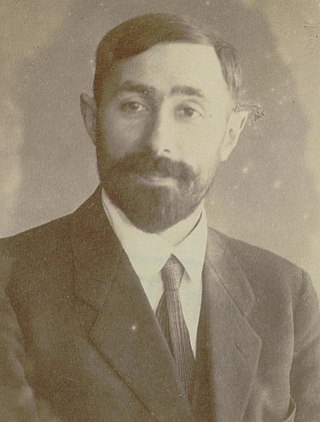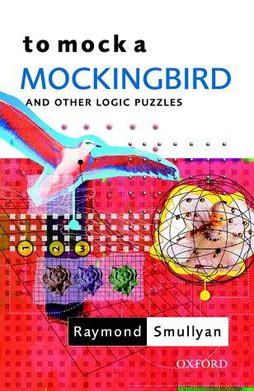Related Research Articles
In mathematics and computer science, currying is the technique of translating a function that takes multiple arguments into a sequence of families of functions, each taking a single argument.
Lambda calculus is a formal system in mathematical logic for expressing computation based on function abstraction and application using variable binding and substitution. Untyped lambda calculus, the topic of this article, is a universal machine, a model of computation that can be used to simulate any Turing machine. It was introduced by the mathematician Alonzo Church in the 1930s as part of his research into the foundations of mathematics. In 1936, Church found a formulation which was logically consistent, and documented it in 1940.
Haskell Brooks Curry was an American mathematician, logician and computer scientist. Curry is best known for his work in combinatory logic, whose initial concept is based on a paper by Moses Schönfinkel, for which Curry did much of the development. Curry is also known for Curry's paradox and the Curry–Howard correspondence. Named for him are three programming languages: Haskell, Brook, and Curry, and the concept of currying, a method to transform functions, used in mathematics and computer science.
Unlambda is a minimal, "nearly pure" functional programming language invented by David Madore. It is based on combinatory logic, an expression system without the lambda operator or free variables. It relies mainly on two built-in functions and an apply operator. These alone make it Turing-complete, but there are also some input/output (I/O) functions to enable interacting with the user, some shortcut functions, and a lazy evaluation function. Variables are unsupported.
Combinatory logic is a notation to eliminate the need for quantified variables in mathematical logic. It was introduced by Moses Schönfinkel and Haskell Curry, and has more recently been used in computer science as a theoretical model of computation and also as a basis for the design of functional programming languages. It is based on combinators, which were introduced by Schönfinkel in 1920 with the idea of providing an analogous way to build up functions—and to remove any mention of variables—particularly in predicate logic. A combinator is a higher-order function that uses only function application and earlier defined combinators to define a result from its arguments.
In combinatory logic for computer science, a fixed-point combinator, is a higher-order function that returns some fixed point of its argument function, if one exists.
Curry's paradox is a paradox in which an arbitrary claim F is proved from the mere existence of a sentence C that says of itself "If C, then F". The paradox requires only a few apparently-innocuous logical deduction rules. Since F is arbitrary, any logic having these rules allows one to prove everything. The paradox may be expressed in natural language and in various logics, including certain forms of set theory, lambda calculus, and combinatory logic.
In mathematical logic, sequent calculus is a style of formal logical argumentation in which every line of a proof is a conditional tautology instead of an unconditional tautology. Each conditional tautology is inferred from other conditional tautologies on earlier lines in a formal argument according to rules and procedures of inference, giving a better approximation to the natural style of deduction used by mathematicians than David Hilbert's earlier style of formal logic, in which every line was an unconditional tautology. More subtle distinctions may exist; for example, propositions may implicitly depend upon non-logical axioms. In that case, sequents signify conditional theorems of a first-order theory rather than conditional tautologies.
In programming language theory and proof theory, the Curry–Howard correspondence is the direct relationship between computer programs and mathematical proofs. It is also known as the Curry–Howard isomorphism or equivalence, or the proofs-as-programs and propositions- or formulae-as-types interpretation.

Moses Ilyich Schönfinkel was a logician and mathematician, known for the invention of combinatory logic.
System F is a typed lambda calculus that introduces, to simply typed lambda calculus, a mechanism of universal quantification over types. System F formalizes parametric polymorphism in programming languages, thus forming a theoretical basis for languages such as Haskell and ML. It was discovered independently by logician Jean-Yves Girard (1972) and computer scientist John C. Reynolds.
Categorial grammar is a family of formalisms in natural language syntax that share the central assumption that syntactic constituents combine as functions and arguments. Categorial grammar posits a close relationship between the syntax and semantic composition, since it typically treats syntactic categories as corresponding to semantic types. Categorial grammars were developed in the 1930s by Kazimierz Ajdukiewicz and in the 1950s by Yehoshua Bar-Hillel and Joachim Lambek. It saw a surge of interest in the 1970s following the work of Richard Montague, whose Montague grammar assumed a similar view of syntax. It continues to be a major paradigm, particularly within formal semantics.
The SKI combinator calculus is a combinatory logic system and a computational system. It can be thought of as a computer programming language, though it is not convenient for writing software. Instead, it is important in the mathematical theory of algorithms because it is an extremely simple Turing complete language. It can be likened to a reduced version of the untyped lambda calculus. It was introduced by Moses Schönfinkel and Haskell Curry.
The simply typed lambda calculus, a form of type theory, is a typed interpretation of the lambda calculus with only one type constructor that builds function types. It is the canonical and simplest example of a typed lambda calculus. The simply typed lambda calculus was originally introduced by Alonzo Church in 1940 as an attempt to avoid paradoxical use of the untyped lambda calculus.

To Mock a Mockingbird and Other Logic Puzzles: Including an Amazing Adventure in Combinatory Logic is a book by the mathematician and logician Raymond Smullyan. It contains many nontrivial recreational puzzles of the sort for which Smullyan is well known. It is also a gentle and humorous introduction to combinatory logic and the associated metamathematics, built on an elaborate ornithological metaphor.
Primitive recursive arithmetic (PRA) is a quantifier-free formalization of the natural numbers. It was first proposed by Norwegian mathematician Skolem (1923), as a formalization of his finitistic conception of the foundations of arithmetic, and it is widely agreed that all reasoning of PRA is finitistic. Many also believe that all of finitism is captured by PRA, but others believe finitism can be extended to forms of recursion beyond primitive recursion, up to ε0, which is the proof-theoretic ordinal of Peano arithmetic. PRA's proof theoretic ordinal is ωω, where ω is the smallest transfinite ordinal. PRA is sometimes called Skolem arithmetic, although that has another meaning, see Skolem arithmetic.
In formal language theory and computer science, Iota and Jot are languages, extremely minimalist formal systems, designed to be even simpler than other more popular alternatives, such as lambda calculus and SKI combinator calculus. Thus, they can also be considered minimalist computer programming languages, or Turing tarpits, esoteric programming languages designed to be as small as possible but still Turing-complete. Both systems use only two symbols and involve only two operations. Both were created by professor of linguistics Chris Barker in 2001. Zot (2002) is a successor to Iota that supports input and output.
In mathematical logic, predicate functor logic (PFL) is one of several ways to express first-order logic by purely algebraic means, i.e., without quantified variables. PFL employs a small number of algebraic devices called predicate functors that operate on terms to yield terms. PFL is mostly the invention of the logician and philosopher Willard Quine.
Combinatory categorial grammar (CCG) is an efficiently parsable, yet linguistically expressive grammar formalism. It has a transparent interface between surface syntax and underlying semantic representation, including predicate–argument structure, quantification and information structure. The formalism generates constituency-based structures and is therefore a type of phrase structure grammar.
In mathematical logic, the Scott–Curry theorem is a result in lambda calculus stating that if two non-empty sets of lambda terms A and B are closed under beta-convertibility then they are recursively inseparable.
References
- Hendrik Pieter Barendregt (1984) The Lambda Calculus, Its Syntax and Semantics, Vol. 103 in Studies in Logic and the Foundations of Mathematics. North-Holland. ISBN 0-444-87508-5
- Haskell Curry (1930) "Grundlagen der kombinatorischen Logik," Amer. J. Math. 52: 509–536; 789–834. https://doi.org/10.2307/2370619
- Curry, Haskell B.; Hindley, J. Roger; Seldin, Jonathan P. (1972). Combinatory Logic. Vol. II. Amsterdam: North Holland. ISBN 0-7204-2208-6.
- Raymond Smullyan (1994) Diagonalization and Self-Reference. Oxford Univ. Press.